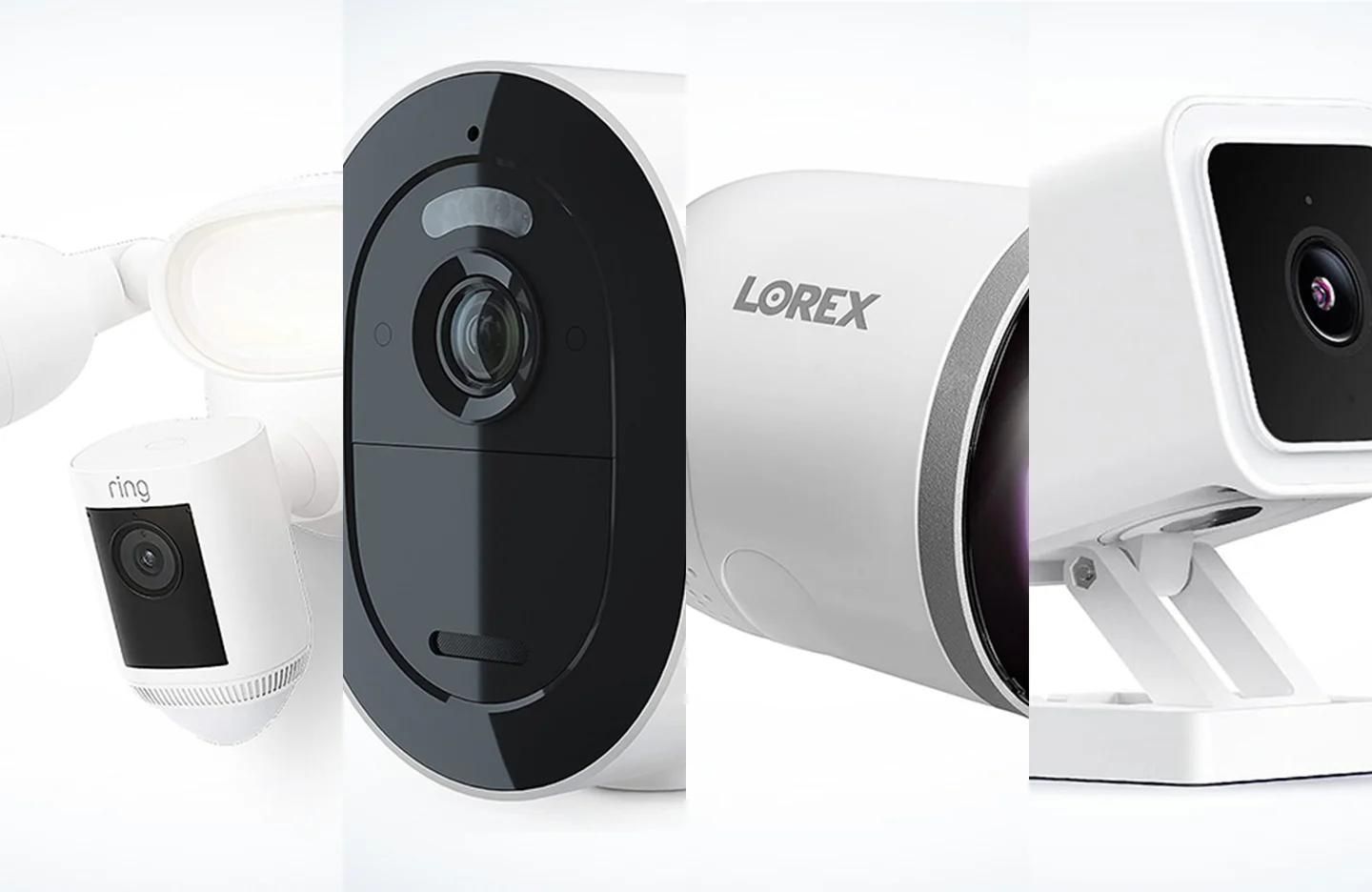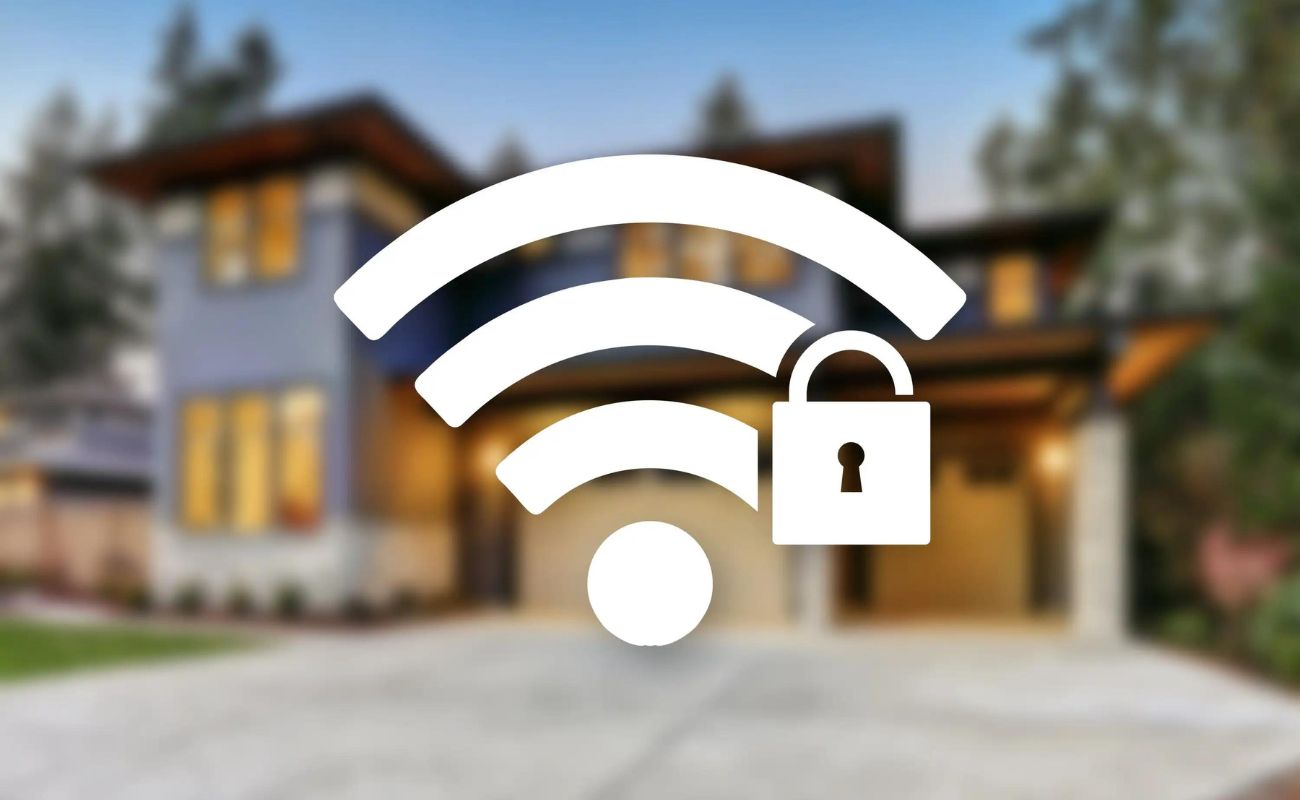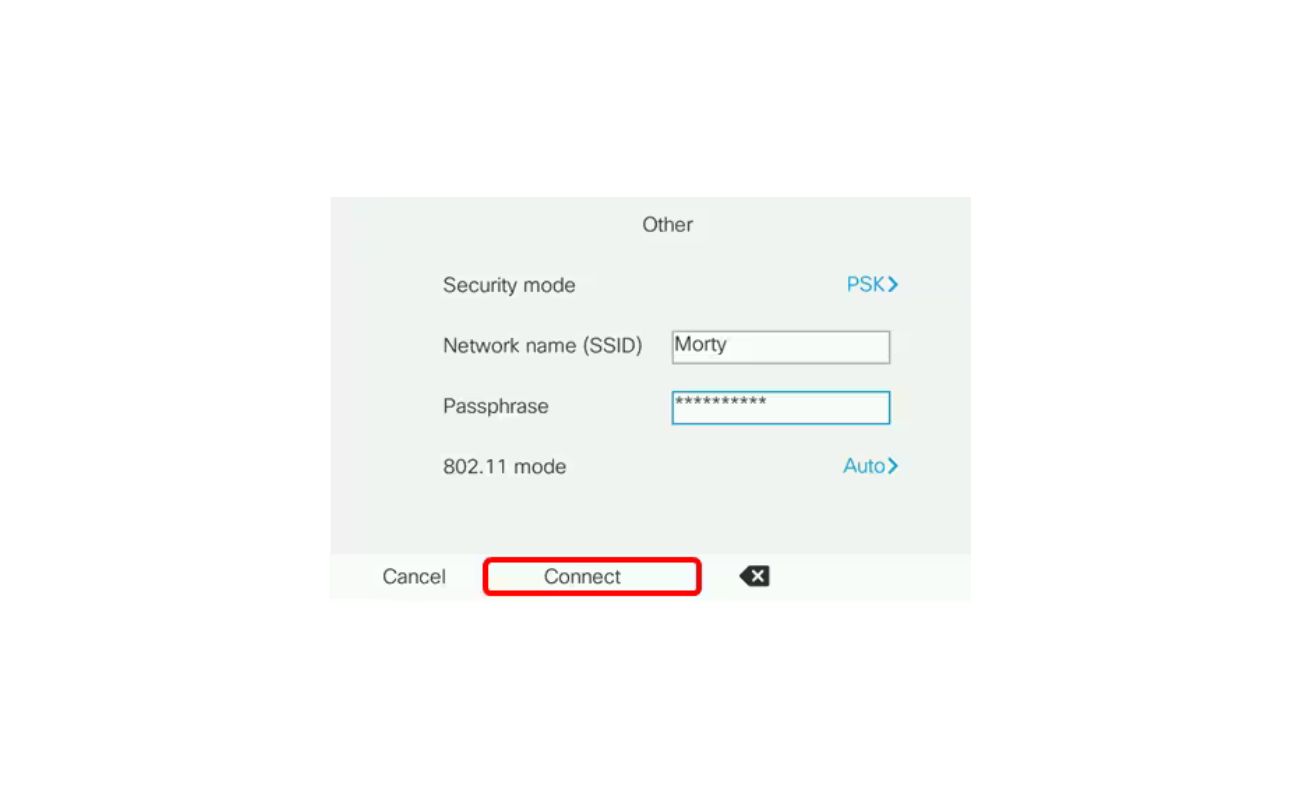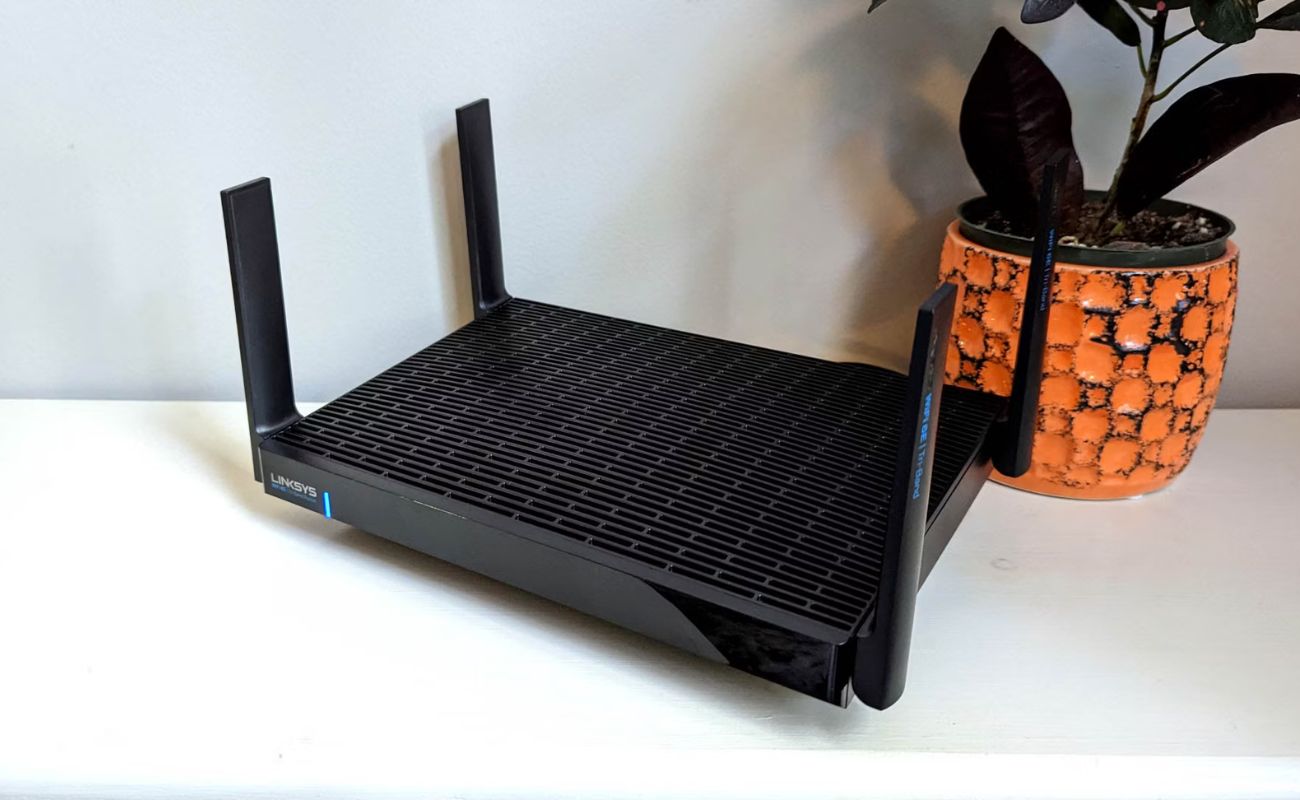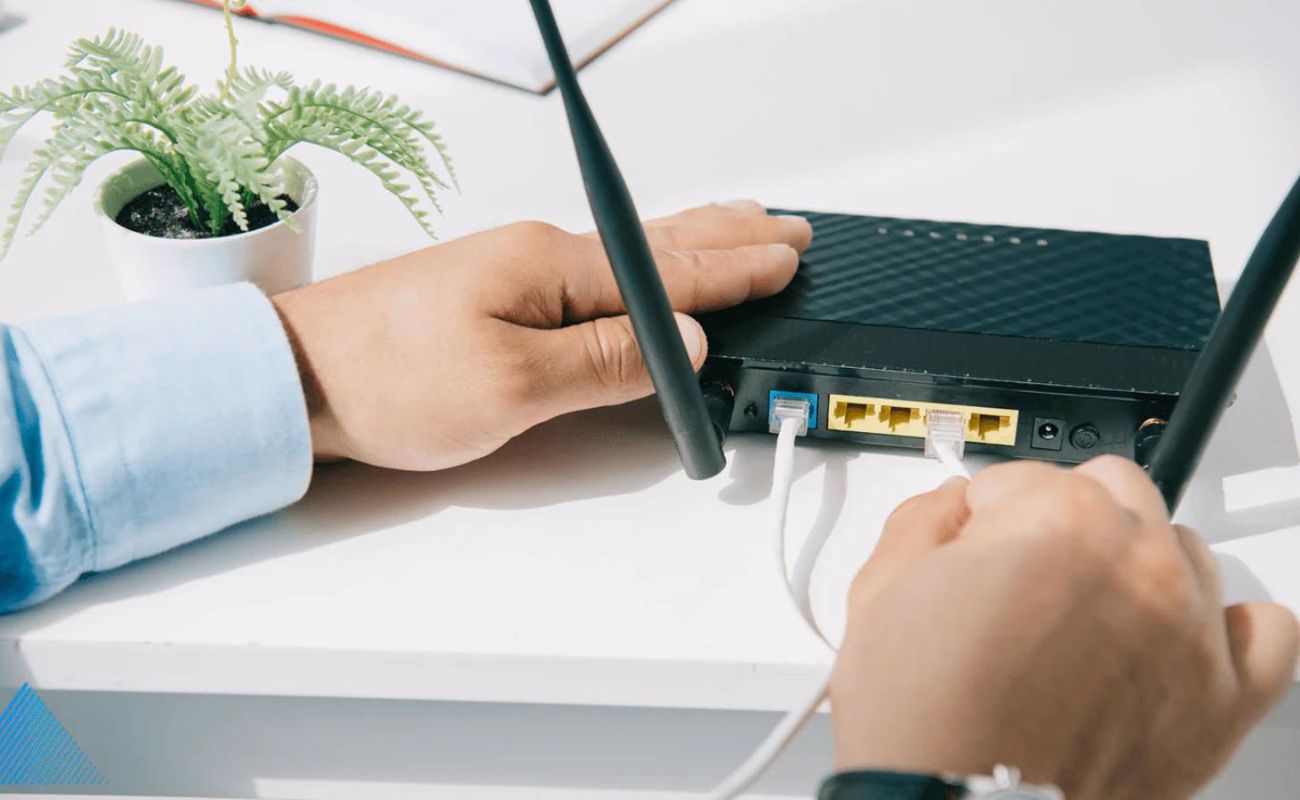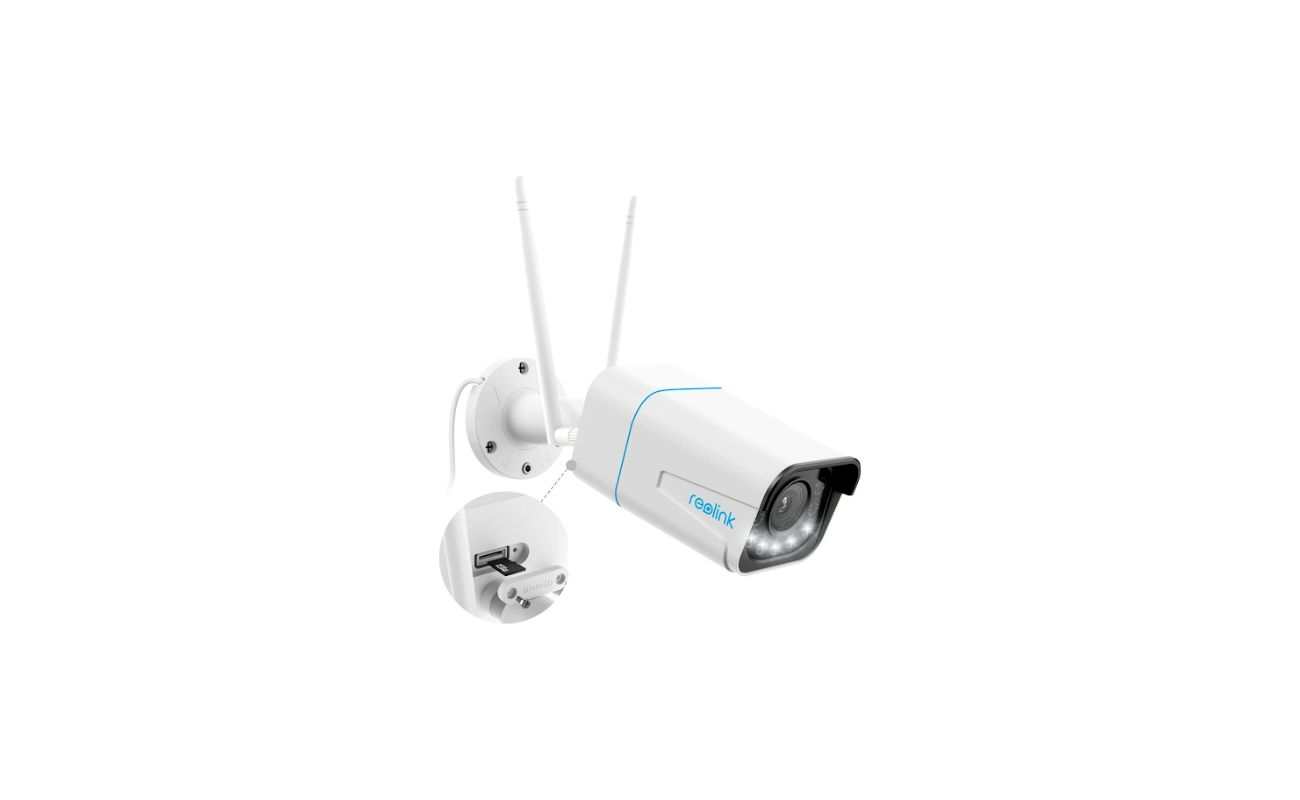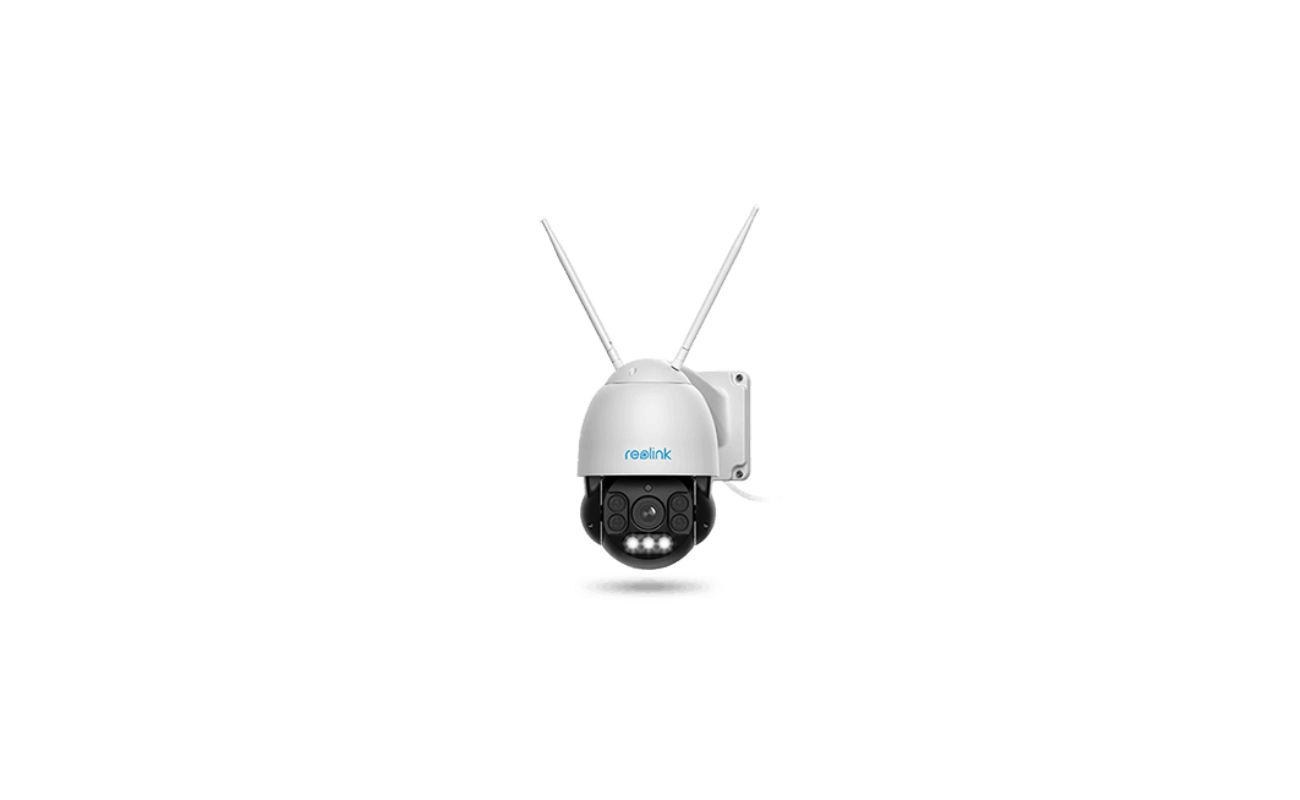Home>Home Security and Surveillance>Best Wireless Security: WPA, TKIP, Or What Is It?
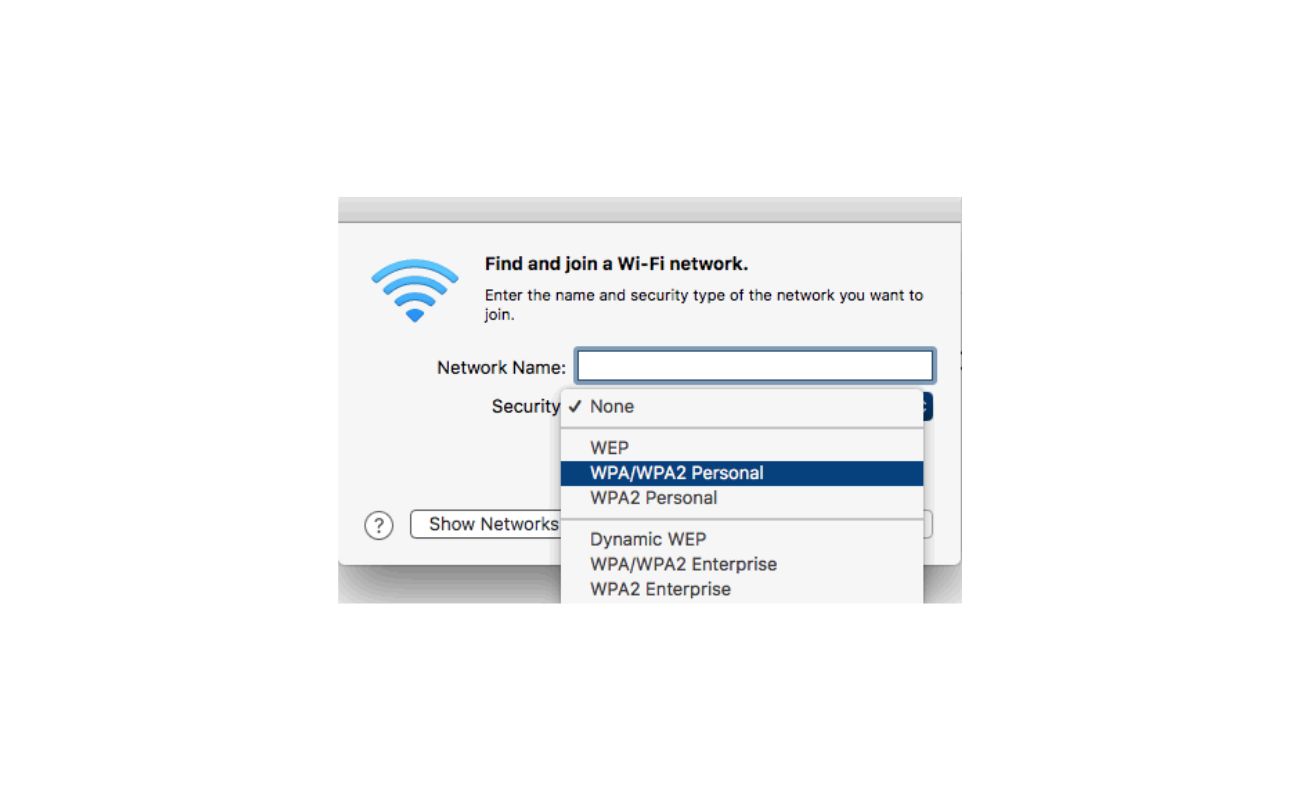

Home Security and Surveillance
Best Wireless Security: WPA, TKIP, Or What Is It?
Modified: October 28, 2024
Learn about the best wireless security options for your home, including WPA, TKIP, and more. Ensure enhanced home security and surveillance with these technologies.
(Many of the links in this article redirect to a specific reviewed product. Your purchase of these products through affiliate links helps to generate commission for Storables.com, at no extra cost. Learn more)
Introduction
With the increasing reliance on wireless technology in our homes and businesses, ensuring the security of our wireless networks has become more essential than ever. Wireless security not only protects our personal data and sensitive information but also safeguards our devices and networks from unauthorized access and potential cyber threats.
In this article, we will delve into the world of wireless security and explore the two popular protocols used for securing wireless networks: WPA (Wi-Fi Protected Access) and TKIP (Temporal Key Integrity Protocol). We will discuss what they are, how they work, and which one is better suited for your security needs.
So, let’s dive in and unravel the mysteries of wireless security to help you make informed decisions when it comes to safeguarding your network.
Key Takeaways:
- WPA and TKIP are important for securing wireless networks. WPA2 with AES encryption is the best choice for strong security.
- Using multiple security measures like WPA3, MAC address filtering, and strong passwords can enhance wireless network protection. Keep devices updated for maximum security.
Wireless Security: Why is it important?
Wireless security plays a crucial role in protecting our sensitive data and minimizing the risk of unauthorized access to our networks. In today’s interconnected world, where wireless networks are prevalent, ensuring the security of our wireless connections has become more essential than ever.
Here are some reasons why wireless security is of utmost importance:
- Data Protection: Wireless networks transmit and receive data through the airwaves, making them susceptible to interception by hackers and cybercriminals. Implementing strong wireless security measures ensures that the data transmitted over the network is encrypted, making it difficult for attackers to decipher.
- Preventing Unauthorized Access: Without proper security measures in place, unauthorized users can gain access to your wireless network. This can lead to a wide range of security concerns, including data theft, unauthorized use of network resources, and even the potential for launching further attacks on connected devices.
- Securing Personal Information: With the proliferation of smart devices and the internet of things (IoT), our homes are becoming increasingly interconnected. This means that our personal information, such as banking details, passwords, and confidential documents, are often stored and transmitted over wireless networks. Implementing wireless security measures helps protect this sensitive information from falling into the wrong hands.
- Protecting Devices: Wireless security not only safeguards our data but also protects our devices from being compromised. Hackers can exploit vulnerabilities in the network to gain control over connected devices, leading to unauthorized surveillance, data manipulation, or even rendering the devices useless. Implementing strong wireless security measures helps prevent such attacks and ensures the integrity of our devices.
Overall, wireless security is crucial for maintaining privacy, protecting sensitive data, and ensuring the smooth functioning of our connected devices and networks. By taking appropriate security measures, such as implementing strong encryption protocols and using robust authentication mechanisms, we can create a secure environment for our wireless networks.
Understanding WPA (Wi-Fi Protected Access)
Wi-Fi Protected Access (WPA) is a wireless security protocol designed to provide enhanced security for wireless networks. It was introduced as an upgrade to the older and less secure Wired Equivalent Privacy (WEP) protocol.
WPA incorporates several security features to protect the confidentiality and integrity of data transmitted over a wireless network. These features include:
- Encryption: WPA uses strong encryption algorithms, such as Advanced Encryption Standard (AES), to encrypt the data transmitted over the wireless network. This ensures that even if someone intercepts the data, they would not be able to decipher it.
- Authentication: WPA includes robust authentication mechanisms to verify the identity of devices trying to connect to the network. This helps prevent unauthorized access and ensures that only legitimate devices can join the network.
- Key Management: WPA uses a dynamic key management system, where an encryption key, known as the Pairwise Transient Key (PTK), is generated for each wireless connection. This ensures that even if one key is compromised, it does not affect the security of other network connections.
- Message Integrity: WPA utilizes Message Integrity Check (MIC) to verify the integrity of data packets and detect any tampering attempts. If a packet is modified in transit, the MIC will fail, indicating that the packet has been tampered with.
There are two versions of WPA: WPA-PSK (Pre-Shared Key) and WPA-Enterprise.
WPA-PSK: WPA-PSK is designed for home networks and small businesses. It uses a Pre-Shared Key (PSK), also known as a passphrase, that is shared among all devices connecting to the network. This key is used to encrypt and decrypt data sent over the network. It provides a convenient way to secure a wireless network without the need for a dedicated authentication server.
WPA-Enterprise: WPA-Enterprise is commonly used in larger organizations and utilizes a more advanced authentication mechanism called 802.1X/EAP (Extensible Authentication Protocol). This involves a central authentication server, such as a RADIUS (Remote Authentication Dial-In User Service) server, which verifies the identity of each device connecting to the network. This provides a higher level of security and granular control over network access.
Overall, WPA is a significant improvement over its predecessor, WEP, in terms of security features and robustness. It provides a strong foundation for securing wireless networks and is widely supported by most modern Wi-Fi-enabled devices.
Exploring TKIP (Temporal Key Integrity Protocol)
Temporal Key Integrity Protocol (TKIP) is a security protocol used in conjunction with WPA to provide enhanced security for wireless networks. It was introduced as an interim solution while transitioning from the vulnerable Wired Equivalent Privacy (WEP) protocol to the more secure Advanced Encryption Standard (AES) used by WPA2.
TKIP addresses the limitations of WEP by incorporating several security enhancements. Some of the key features of TKIP are:
- Encryption: TKIP utilizes a stronger encryption algorithm than WEP, known as the RC4 algorithm. This provides improved data confidentiality by encrypting the data transmitted over the wireless network.
- Key Mixing: TKIP dynamically generates a new encryption key for each data packet transmitted. This is accomplished by combining a per-packet initialized vector (IV) with the master encryption key, making it more difficult for attackers to decrypt the data.
- Message Integrity Check (MIC): TKIP incorporates MIC to ensure the integrity of the data packets. This involves calculating a cryptographic checksum for each packet and transmitting it alongside the data. The recipient device validates the integrity of the packet by recalculating the checksum and comparing it with the received value. If there is a mismatch, it indicates that the packet may have been tampered with.
- Key Hierarchy: TKIP implements a key hierarchy mechanism, which includes the Master Key (MK), the Transient Key (TK), and the Pairwise Transient Key (PTK). The MK is a shared secret key used to generate the TK, which is used for encrypting data between the access point and the device. The PTK is generated for each individual wireless connection and is used for securing communication between the device and the access point. The use of different keys at different stages adds an extra layer of security.
Despite the improvements offered by TKIP, it is important to note that it is considered relatively less secure than the successor technology, AES used in WPA2. TKIP was designed as a temporary solution to address the vulnerabilities of WEP until the adoption of more robust encryption standards.
It is highly recommended to use WPA2-AES instead of TKIP wherever possible, as AES provides stronger encryption and better security. In fact, many modern devices and routers no longer support TKIP, as it is considered outdated and less secure.
Therefore, while TKIP played a crucial role in improving the security of wireless networks during the transition from WEP to WPA2, it is now recommended to use the more secure WPA2-AES protocol for wireless network protection.
Always use WPA2 for the best wireless security. It provides stronger encryption and better protection against unauthorized access compared to WPA and TKIP.
WPA vs. TKIP: Which is Better?
When it comes to choosing between WPA and TKIP, it’s important to understand that they are not mutually exclusive options. In fact, they work together to provide enhanced security for wireless networks. WPA is the overall security protocol, while TKIP is the encryption protocol used within WPA.
That being said, it is crucial to note that WPA2 with AES encryption is considered to be more secure than WPA with TKIP. AES (Advanced Encryption Standard) is a more robust encryption algorithm that offers stronger protection for wireless networks compared to TKIP, which relies on the RC4 encryption algorithm.
Here are a few key points to consider when comparing WPA (with TKIP) and WPA2 (with AES):
- Security: WPA2 with AES is generally considered to be more secure than WPA with TKIP. AES encryption is resistant to various cryptographic attacks and offers a higher level of data confidentiality.
- Compatibility: While modern devices and routers support both WPA and WPA2, TKIP is becoming increasingly outdated and is being phased out in favor of AES encryption. It is recommended to use WPA2 (with AES) whenever possible for better compatibility with newer devices and improved security.
- Performance: In terms of network performance, both WPA (with TKIP) and WPA2 (with AES) can have a similar impact on network speed. However, since AES is a more efficient encryption algorithm, it may provide a slightly faster connection speed compared to TKIP.
- Availability of Security Features: WPA2 (with AES) offers additional security features, such as CCMP (Counter Mode with Cipher Block Chaining Message Authentication Code Protocol), which enhances data integrity and protection against replay attacks.
It’s important to note that while WPA2 with AES is the recommended choice for securing wireless networks, the availability of different security options may vary depending on the particular device or router you are using. It’s always a good practice to check your device’s documentation or consult with the manufacturer to ensure compatibility and optimal security.
In summary, while WPA with TKIP played a significant role in improving the security of wireless networks, current best practices recommend using WPA2 with AES encryption for enhanced security. AES provides stronger encryption and better resistance against cryptographic attacks, making it the preferred choice for securing wireless networks.
Other Wireless Security Options
While WPA (Wi-Fi Protected Access) and TKIP (Temporal Key Integrity Protocol) are widely used and recommended for securing wireless networks, there are other security options available that can further enhance the protection of your wireless connections. Let’s explore some of these options:
- WPA3: WPA3 is the latest generation of Wi-Fi security protocols and offers improved encryption and authentication mechanisms. It provides enhanced protection against brute-force attacks and introduces features like simultaneous authentication of equals (SAE), which strengthens the security of the initial connection setup process.
- MAC Address Filtering: MAC (Media Access Control) address filtering is a method that allows or denies access to wireless networks based on the unique hardware address of a device. By configuring a whitelist of allowed MAC addresses, only devices with registered MAC addresses can connect to the network. While MAC address filtering adds an extra layer of security, it is important to note that MAC addresses can be spoofed, so it is not foolproof on its own.
- Disable SSID Broadcasting: Service Set Identifier (SSID) broadcasting is the process by which a wireless network advertises its presence. By disabling SSID broadcasting, you make your network “hidden.” This means that users will have to manually enter the SSID to connect to the network. While this can deter casual users from connecting, it does not provide robust security on its own, as the SSID can still be discovered through network scanning tools.
- Virtual Private Network (VPN): Utilizing a VPN connection adds an extra layer of security by encrypting all network traffic going in and out of your devices. A VPN creates a secure and private tunnel between your device and the VPN server, which ensures that even if someone intercepts your data, it remains secure.
- Firewall: Implementing a firewall on your network can help prevent unauthorized access and protect your devices from potential threats. Firewalls monitor incoming and outgoing traffic, scrutinizing packets and blocking any that are deemed suspicious or not allowed based on predefined rules.
- Password Strength: Using strong and unique passwords for both your wireless network and the administrative access to your router is crucial. A strong password should be long, include a combination of uppercase and lowercase letters, numbers, and special characters. Avoid using easily guessable passwords, such as common words or personal information.
It’s worth noting that implementing multiple security measures in combination can significantly enhance the overall protection of your wireless network. Each security option serves a specific purpose and contributes to the overall security posture.
Remember, wireless security is an ongoing process, and it’s important to keep your devices up to date with the latest firmware updates and security patches. Regularly review and update your security settings to ensure the highest level of protection for your wireless network.
Conclusion
Securing our wireless networks is of utmost importance to protect our data, privacy, and devices from unauthorized access and potential threats. In this article, we explored the fundamentals of wireless security, specifically focusing on WPA and TKIP.
We learned that WPA (Wi-Fi Protected Access) is a robust security protocol that provides encryption, authentication, and key management features to safeguard wireless networks. TKIP (Temporal Key Integrity Protocol) is the encryption protocol used within WPA, offering improved encryption and message integrity compared to the vulnerable WEP (Wired Equivalent Privacy).
While both WPA and TKIP have played crucial roles in improving wireless security, it is essential to use the more secure options available today. WPA2 (Wi-Fi Protected Access 2) with AES (Advanced Encryption Standard) is the recommended choice, as it offers stronger encryption and enhanced security features.
Additionally, we explored other wireless security options, such as WPA3, MAC address filtering, disabling SSID broadcasting, VPNs, firewalls, and password strength. These measures, when implemented together, contribute to a multi-layered security approach to protect our wireless networks.
In conclusion, ensuring the security of our wireless networks is vital to protect our sensitive data, maintain privacy, and safeguard our devices. By implementing strong encryption protocols, enabling authentication mechanisms, and regularly updating security measures, we can create a secure environment for our wireless connections.
Remember to stay informed about the latest advancements in wireless security, regularly update your devices and routers with the latest firmware, and follow best practices in password management. By doing so, we can protect our networks and enjoy the benefits of wireless connectivity with peace of mind.
Frequently Asked Questions about Best Wireless Security: WPA, TKIP, Or What Is It?
Was this page helpful?
At Storables.com, we guarantee accurate and reliable information. Our content, validated by Expert Board Contributors, is crafted following stringent Editorial Policies. We're committed to providing you with well-researched, expert-backed insights for all your informational needs.


